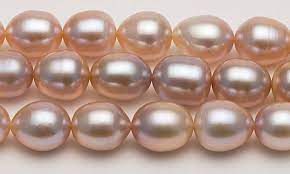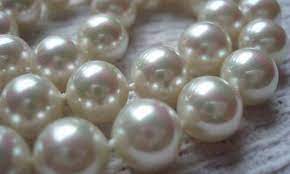
8 Ways To Tell The Difference Between Real Pearls And Costume Jewelry
- Roger
- 0
- on Dec 01, 2022
8 Ways To Tell The Difference Between Real Pearls And Costume Jewelry
There’s nothing quite like the feeling of wearing a piece of jewelry that is so elegant and timeless. However, with the high price tag that often comes along with real pearls, it’s important to be able to distinguish between them and costume jewelry. Here are 8 ways to tell the difference:
1. Color: Real pearls will typically have a more lustrous, creamy color than costume pearls.
2. Surface: Take a close look at the surface of the pearl. Are there any blemishes or irregularities? Real pearls will usually have a smooth, flawless surface.
3. Size: Real pearls are typically much smaller than costume pearls.
4. Shape: Real pearls tend to be more round or oval in shape, while costume pearls can be more irregular in shape.
5. Luster: This is perhaps the most important factor in determining whether a pearl is real or not. Real pearls will have a bright, natural luster, while costume pearls may appear duller or more artificial.
6. Thickness: The thickness of a real pearl is usually much thinner than that of a costume pearl.
7. Weight: Real pearls are typically much lighter in weight than costume pearls.
8. Price: Of course, one of the biggest indicators of whether a pearl is real or not is its price tag! Generally speaking, if the price seems too good to be true, it probably is.
how to get jewelry out of sink drain
Real pearls are made by a process called culturing, in which a small piece of mantle tissue from a live oyster is inserted into another oyster. The oyster will then secrete nacre, which coats the mantle tissue and forms the pearl.
Costume jewelry is not made using this process, and as such, is not truly “real” pearl jewelry. However, there are some costume jewelry pieces that may use genuine pearls in their design. To tell the difference between real and costume pearls, look at the following factors:
-The luster: Real pearls have a high luster, meaning they are very shiny. Costume pearls usually have a lower luster.
-The surface: Real pearls should have a smooth surface with few blemishes. Costume pearls may have a rougher surface or more blemishes.
-The size: Real pearls tend to be small, while costume pearls can be larger.
-The color: Real pearls come in many different colors, while costume pearls are often only white or cream-colored.
Look for a stamp: Most real pearls will have a “14K” or “18K” stamp on them, signifying the karat of the gold they’re made with.
If there’s no stamp, that doesn’t necessarily mean the pearls are fake—but it does make it more likely.
Check the drill hole: A well-made pearl will have a small, neat drill hole near the top.
If the hole is large or uneven, that’s a sign that the pearl has been poorly made.
Look at the surface of the pearls: Real pearls will have some imperfections on their surface, as they’re made by creatures in oysters!
If all of the pearls look exactly alike and perfect, they may be fake.
Check the weight: Costume jewelry is usually very light, while real pearls are heavy for their size.

Look at the surface: Fake pearls are often smooth, while genuine ones have some bumps and ridges.
Examine the stringing: If you see a knot between each pearl, it is probably fake. Real pearls are usually strung without knots.
Inspect the clasps and findings: If they look cheap or flimsy, the pearls are probably not real.
Check for a certificate of authenticity: A reputable jeweler will provide a certificate of authenticity with your purchase.
Inspect the clasp: A simple screw clasp is a good sign that you’re dealing with costume jewelry, while a more intricate clasp indicates that the piece is probably real.
Examine the back of the piece: The back of a piece of jewelry is just as important as the front. If you’re looking at a ring, for example, make sure that the band is smooth and even all the way around. Any unevenness or roughness could be a sign that the piece is fake.
Check for hallmarks: Hallmarks are special markings that indicate that a piece of jewelry is made from real gold or silver. If you see a hallmark, that’s a good sign that the piece is authentic.
scrutinize any gemstones: Gemstones should be flawless and clear. If you see any flaws or cloudiness, chances are good that the stone is fake.
Look at the setting: If the pearl is set in gold or silver, it’s more likely to be real.
If the setting is made of inexpensive metal or plastic, the pearl is more likely to be fake.
Check for a drilled hole: A small, perfect drill hole in the center of the pearl is a good indication that it’s real.
Fake pearls are often glued to their settings.
Examine the surface of the pearl: Real pearls have tiny surface irregularities called “flaws” or “blemishes.”
These imperfections are actually what make a pearl valuable. Fake pearls are usually flawless.
Look at the luster: The luster of a real pearl is like no other natural substance on earth. If you’ve ever seen light reflect off a piece of quality glass, you’ve seen something similar to the luster of a real pearl. Fake pearls have an artificial shine.
Consider the price: Real pearls are generally much more expensive than costume jewelry.
Although you may find a good deal on costume jewelry, it is important to remember that real pearls are generally much more expensive. This is because they are made from a natural material, whereas costume jewelry is usually made from synthetic materials. Real pearls also tend to be of better quality, meaning they will last longer and look nicer than costume jewelry. So, if you are looking for something to wear on a special occasion, it is probably worth splurging on a pair of real pearls!
Examine the surface: Real pearls should have some imperfections on their surface, while costume pearls will usually be completely smooth.
Inspect the back: Take a look at the back of the pearl. If it is perfectly round and smooth, it is most likely a fake.
Look for luster: Luster is what gives pearls their characteristic shine. Fake pearls will often have a duller, more matte finish.
Check for uniformity: Real pearls should be mostly uniform in shape and size, while fake pearls may be misshapen or have large bumps on them.
Hold them up to your ear: Real pearls will make a faint clicking sound when you do this, while costume pearls will be silent.
More than just jewelry, pearls are a classic staple that can elevate any ensemble. Whether you’re wearing a little black dress or a casual t-shirt and jeans, adding a string of pearls can make all the difference. And while they may look delicate, pearls are actually quite durable — with proper care, they can last a lifetime.
When shopping for pearls, it’s important to keep in mind that not all pearls are created equal. Real pearls are relatively rare and therefore tend to be more expensive than their costume pearl counterparts. But how can you tell the difference? Here are a few tips:
First, take a close look at the surface of the pearl. Real pearls will have some irregularities and imperfections, while fake ones will often be completely uniform in shape and size. Second, hold them up to your ear: Real pearls will make a faint clicking sound when you do this, while costume pearls will be silent. Finally, rub the Pearls against your teeth: real Pearls will feel slightly gritty, while fake ones will be smooth.
Have them appraised: The surest way to tell if you’re dealing with real pearls is to take them to a professional jeweler for an appraisal.
“Natural” or “cultured”: Natural pearls are those that form without human intervention, while cultured pearls are grown in pearl farms.
Look for flaws: Real pearls are never perfectly round and smooth; they always have some sort of flaw.
Check the drill hole: A small, neat drill hole is a sign of a real pearl.
how to clean 18k gold plated jewelry
When it comes to fine jewelry, there are a few things you should know in order to keep your pieces looking their best. Here are a few tips on how to clean 18k gold plated jewelry:
-Start by using a soft, lint-free cloth to wipe down your jewelry. This will remove any surface dirt and grime.
-If your jewelry is still looking dull, you can try cleaning it with a mild soap and water solution. Be sure to rinse it well afterwards.
-To restore shine, you can buff your jewelry with a soft cloth.
-Avoid using harsh chemicals or cleaners on your gold plated jewelry as this can damage the finish.
With proper care, your 18k gold plated jewelry will continue to look beautiful for many years to come!